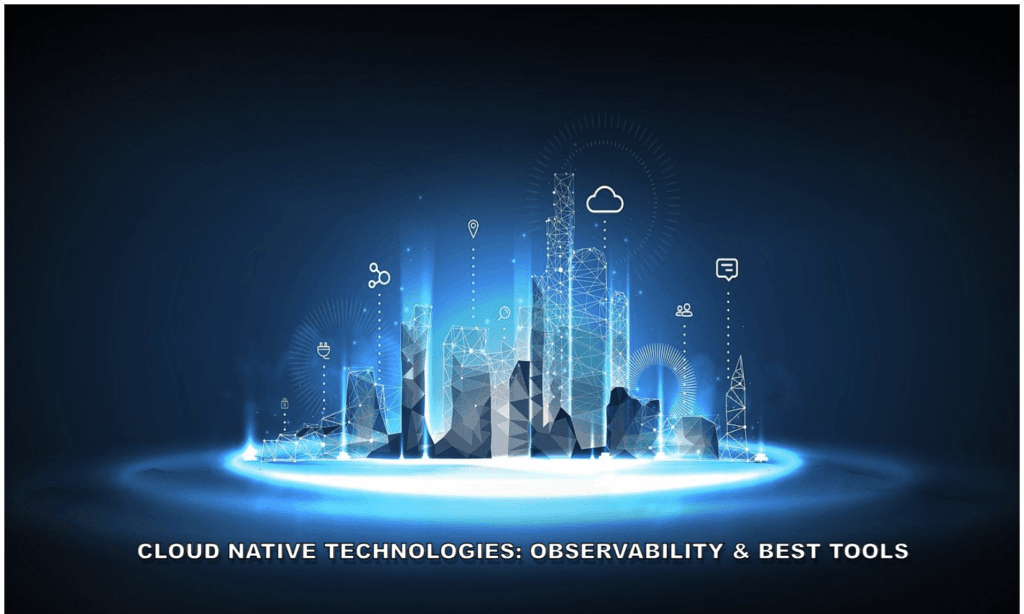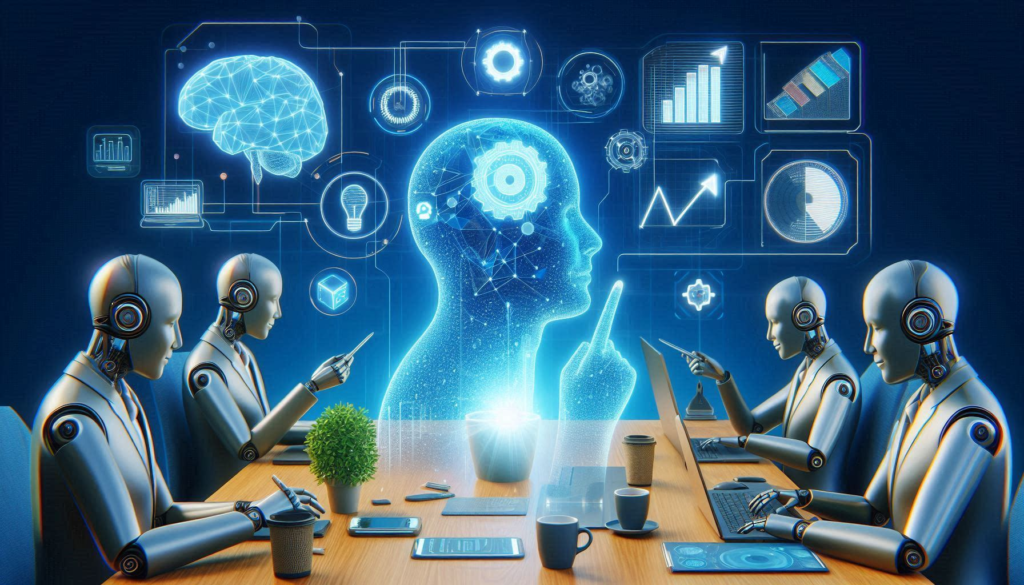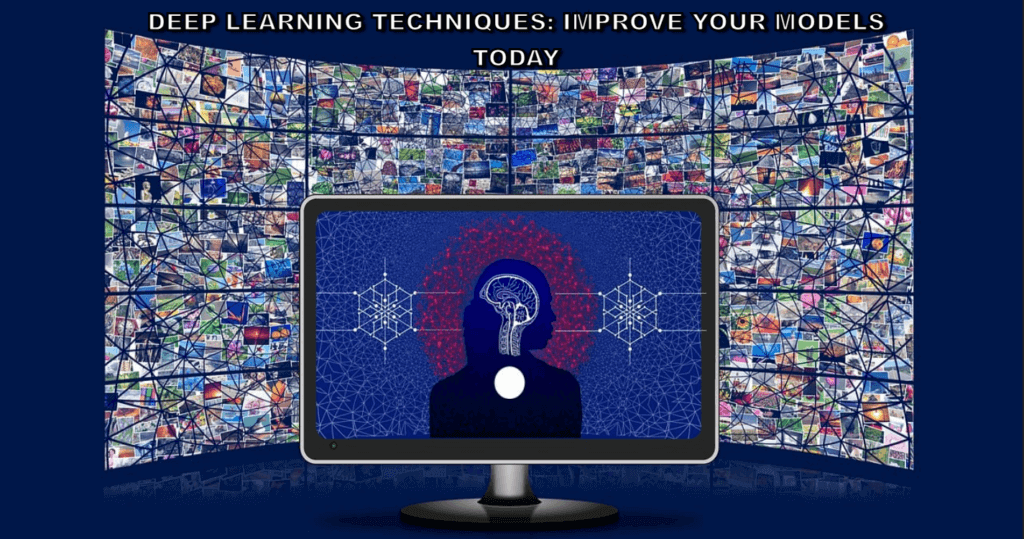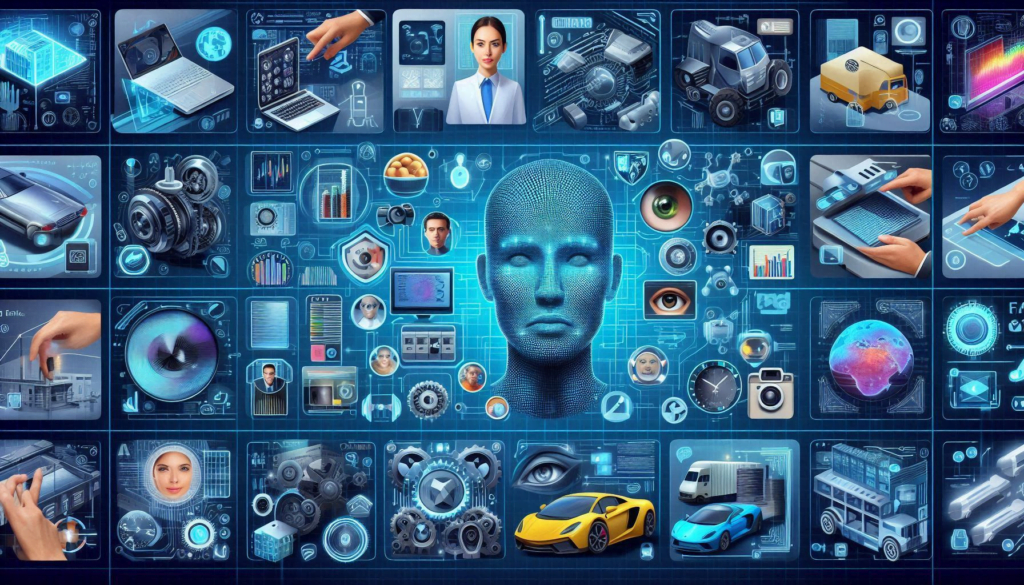In an era where technology continuously reshapes our interactions and experiences, Natural Language Processing (NLP) stands out as a revolutionary force. Imagine a world where machines not only understand your spoken words but also grasp the nuances and intentions behind them. NLP is the technology making this possible, bridging the gap between human communication and artificial intelligence. In this Technology Moment, we dive into the transformative potential of NLP, exploring how it’s reshaping industries, enhancing user interactions, and driving the next wave of innovation. Join us as we unravel the intricacies of Natural Language Processing and its profound impact on our digital landscape.
Natural Language Processing (NLP) is at the forefront of the technological revolution, bridging the gap between human language and machine understanding. In our increasingly digital world, where communication and data exchange are predominantly driven by text and voice, NLP plays a pivotal role in enabling computers to understand and respond to human language in a meaningful way. This introduction serves as a gateway to understanding the significance of NLP and its profound impact on various industries and daily life.
Understanding Natural Language Processing (NLP)
At its core, NLP is a field of artificial intelligence that focuses on the interaction between computers and human language. It involves the development of algorithms and models that allow machines to process and analyze large amounts of natural language data—whether written or spoken.
NLP is not just about translating text or recognizing speech; it’s about understanding the nuances of language, such as context, tone, and intent. This makes it possible for computers to perform tasks like translating languages, summarizing texts, detecting sentiments, and even engaging in conversations.
The Significance of NLP in Today’s World
The importance of NLP cannot be overstated, especially in an era where the volume of unstructured data—like emails, social media posts, and customer reviews—is growing exponentially. Traditional methods of data analysis struggle to keep up with the sheer volume and complexity of this data. This is where NLP shines, as it provides the tools and techniques needed to make sense of vast amounts of text and speech data.
In everyday life, NLP applications are becoming increasingly common. From virtual assistants like Siri and Alexa to chatbots used in customer service, NLP is making interactions with technology more intuitive and human-like. In industries such as healthcare, finance, and education, NLP is being used to streamline processes, improve decision-making, and enhance the overall user experience.
Moreover, the rise of big data and the demand for real-time information processing have further cemented the importance of NLP. Businesses are leveraging NLP to gain insights from customer feedback, monitor brand reputation on social media, and even automate content creation. The ability to analyze and understand human language data is not just a competitive advantage—it’s becoming a necessity.
Table of Contents
What is Natural Language Processing?
Within the study of artificial intelligence (AI), Natural Language Processing (NLP) is a subfield that focuses on natural language interaction between computers and people. It’s the technology behind the ability of machines to process, understand, and generate human language in a way that is both meaningful and useful. At its core, NLP seeks to bridge the gap between human communication and computer understanding by enabling machines to comprehend and respond to the way we naturally speak and write.
The Evolution of NLP Over the Years
The journey of NLP began in the 1950s, with early attempts to automate language translation and basic text analysis. Initially, these efforts were based on rule-based systems, where linguists and engineers manually coded the rules of language. However, this approach was limited by the complexity and variability of human language.
As computational power and data availability increased, the field of NLP shifted towards statistical methods in the late 20th century. This transition allowed for more robust models that could learn language patterns from large datasets rather than relying solely on predefined rules. Machine learning became a central component of NLP, enabling systems to improve their understanding and generation of language over time.
In recent years, the advent of deep learning and neural networks has revolutionized NLP. Modern NLP systems are now capable of understanding context, sentiment, and even generating human-like text. Technologies like Transformers, which power advanced models like GPT (Generative Pre-trained Transformer), have pushed the boundaries of what NLP can achieve, making it possible for machines to engage in complex conversations, translate languages with high accuracy, and even create content indistinguishable from human writing.
How Natural Language Processing Works
Natural Language Processing (NLP) is a fascinating area of artificial intelligence (AI) that focuses on enabling machines to understand, interpret, and generate human language. To grasp how NLP works, it’s essential to break down the key components and processes that make it all possible. Let’s explore this in detail.
The Role of Algorithms in NLP
At the heart of NLP are complex algorithms that analyze human language. These algorithms are designed to identify patterns in text and speech, making it possible for machines to process and respond to language in a way that’s meaningful to humans. The algorithms vary in complexity, from basic statistical models to advanced machine learning and deep learning techniques.
Key Components of NLP Systems
NLP systems are built on several fundamental components that work together to achieve language understanding. Here are the key components:
1. Tokenization: Tokenization is one of the first steps in the NLP process. It entails segmenting a text into smaller pieces known as tokens. Words, sentences, or even characters can serve as these tokens, based on the desired level of analysis. An example of tokenization might be [“Natural”, “Language”, “Processing”, “is”, “fascinating”] for the line “Natural Language Processing is fascinating.” Tokenization helps the machine understand the structure of the text and prepare it for further analysis.
2. Part-of-Speech Tagging: After the text has been tokenized, Part-of-Speech (POS) tagging comes next. This process involves assigning a grammatical category, such as noun, verb, adjective, etc., to each token. For example, in the sentence “The quick brown fox jumps over the lazy dog,” “fox” would be tagged as a noun, and “jumps” as a verb. POS tagging is crucial for understanding the syntactic structure of a sentence, which in turn aids in interpreting the meaning of the text.
3. Named Entity Recognition (NER): Named Entity Recognition (NER) is a technique used to identify and categorize entities in a text, such as names of people, organizations, locations, dates, and more. For instance, in the sentence “Apple Inc. announced the new iPhone in California,” NER would recognize “Apple Inc.” as an organization, “iPhone” as a product, and “California” as a location. NER is particularly useful in extracting valuable information from large text datasets.
4. Parsing and Syntax Analysis: Parsing and syntax analysis involve analyzing the grammatical structure of a sentence. This step helps the machine understand how different tokens (words) are related to each other within a sentence. For example, in the sentence “The cat sat on the mat,” parsing helps identify that “the cat” is the subject, “sat” is the verb, and “on the mat” is the prepositional phrase describing where the action took place. Syntax analysis is essential for machines to generate meaningful responses or perform actions based on the text.
The Workflow of NLP
The workflow of NLP typically follows these steps in sequence, but the actual implementation can vary depending on the specific application and complexity of the task. Here’s a simplified overview of how these components come together:
- Text Input: The process begins with the input of text or speech, which the machine needs to analyze.
- Preprocessing: The text is preprocessed through tokenization, POS tagging, and NER to prepare it for deeper analysis.
- Parsing and Syntax Analysis: The machine analyzes the grammatical structure of the text to understand the relationships between different parts of the sentence.
- Semantic Analysis: The machine interprets the meaning of the text, considering context, synonyms, and other linguistic nuances.
- Response Generation: Finally, the machine generates a response or performs an action based on its understanding of the text. This could involve answering a question, translating the text, or even generating new content.
Applications of Natural Language Processing
Natural Language Processing (NLP) is a versatile and powerful technology that has found its way into various aspects of our daily lives and numerous industries. Below, we’ll explore some of the key areas where NLP is making a significant impact.

1. Everyday Uses of NLP
NLP is woven into the fabric of our everyday interactions with technology, often in ways we might not even notice. One of the most common applications is in voice assistants like Apple’s Siri, Amazon’s Alexa, and Google Assistant. These systems rely on NLP to understand spoken language, process it, and provide relevant responses. For instance, when you ask Alexa about the weather, NLP processes your query, understands the context, and retrieves the appropriate information.
Another everyday use of NLP is in autocorrect and predictive text features on our smartphones. These tools analyze the context of what you’re typing and predict or correct words to help you communicate more effectively.
2. NLP in Customer Service
One of the most transformative applications of NLP is in the realm of customer service. Chatbots and virtual assistants powered by NLP are revolutionizing the way businesses interact with their customers. These tools can handle a wide range of queries, from answering frequently asked questions to processing orders and providing product recommendations.
For example, when you visit a website and a chat window pops up asking if you need help, that’s likely an NLP-powered chatbot at work. These systems understand and respond to customer inquiries in real time, offering support without the need for human intervention, which significantly reduces wait times and improves customer satisfaction.
3. NLP in Healthcare
The healthcare industry has seen significant advancements thanks to NLP. One of the most notable applications is in the analysis of medical records. NLP algorithms can sift through vast amounts of unstructured data, such as doctors’ notes, patient records, and clinical reports, to extract valuable insights.
For instance, NLP can help identify trends in patient symptoms or treatment outcomes, aiding in better diagnosis and treatment plans. Additionally, NLP is used in clinical documentation to automate the process of transcribing and organizing medical information, thereby freeing up healthcare professionals to focus more on patient care.
4. NLP in Finance
The financial sector has embraced NLP for various critical functions. One of the primary applications is in sentiment analysis for market research. By analyzing news articles, social media posts, and other textual data, NLP systems can gauge public sentiment towards specific stocks, markets, or economic conditions. This information is invaluable for traders and investors making informed decisions.
NLP is also used in automated report generation, where it helps in creating financial summaries, earnings reports, and other documents by analyzing data and presenting it in a human-readable format. Additionally, fraud detection is another area where NLP plays a key role, analyzing transaction patterns and identifying suspicious behavior.
5. NLP in Social Media Monitoring
Social media platforms generate an immense volume of textual data every day, and NLP is essential for making sense of it all. Companies use NLP for brand monitoring by analyzing mentions of their products or services across platforms like Twitter, Facebook, and Instagram. This allows them to understand public perception, respond to customer feedback, and manage their online reputation effectively.
NLP also powers content moderation on social media, where it helps in identifying and filtering out inappropriate or harmful content, ensuring a safer online environment.
Challenges in Natural Language Processing
Natural Language Processing (NLP) is a fascinating and powerful field, but it’s not without its challenges. Despite the advances made over the years, there are several hurdles that developers and researchers face when working with NLP systems. Let’s dive into some of the most significant challenges:
1. Ambiguity and Context in Language
Human language is inherently ambiguous. Humans can usually understand the intended meaning based on context, but teaching machines to do the same is incredibly complex. This ambiguity makes it difficult for NLP systems to consistently interpret text correctly.
Contextual understanding is another challenge. Words and phrases gain meaning from the sentences and paragraphs surrounding them. For example, consider the sentence “He went to the bank to sit down.” Here, “bank” likely refers to a riverbank, not a financial institution. NLP systems must be trained to recognize and process context effectively to make accurate interpretations.
2. Handling Different Languages and Dialects
The world is rich in linguistic diversity, with thousands of languages and countless dialects. Each language has its own grammar, syntax, and cultural nuances, making it challenging for NLP systems to process multiple languages accurately. Even within a single language, there can be variations in dialects, slang, and idiomatic expressions that add another layer of complexity.
For example, English spoken in the United States can differ significantly from English spoken in the United Kingdom or Australia. An NLP system trained primarily on American English might struggle with British slang or Australian idioms, leading to misunderstandings or errors in interpretation.
3. Dealing with Sarcasm and Irony
Sarcasm and irony are common in human communication, but they can be particularly tricky for NLP systems to detect. These forms of expression often rely on tone, context, and cultural knowledge to convey meaning that is opposite to the literal interpretation of the words.
For example, if someone says, “Oh, great, another meeting,” they might not actually be pleased about having another meeting. Detecting sarcasm requires an understanding of subtle cues that go beyond the text itself, making it a significant challenge for NLP developers.
4. Ensuring Data Privacy and Security
With the increasing use of NLP in applications like virtual assistants, chatbots, and automated customer service, vast amounts of personal and sensitive data are being processed. Ensuring that this data is handled securely is a major concern. Data breaches and unauthorized access to information can lead to significant privacy violations.
Moreover, the ethical handling of data is crucial. NLP systems must be designed to respect user privacy, ensuring that personal information is not misused or exposed. This includes implementing robust encryption methods, adhering to data protection regulations, and being transparent about data usage practices.
5. Cultural and Ethical Considerations
Language is deeply intertwined with culture, and NLP systems must account for cultural differences when processing text. What may be considered a neutral statement in one culture could be offensive or inappropriate in another.
Ethical considerations also come into play, especially when NLP is used in sensitive areas like law enforcement, healthcare, and hiring. There is a risk of bias in NLP models, where certain groups might be unfairly represented or discriminated against. Ensuring fairness and inclusivity in NLP systems is an ongoing challenge that requires careful attention to training data, algorithms, and model evaluation.
NLP and Artificial Intelligence
Natural Language Processing (NLP) and Artificial Intelligence (AI) are two intertwined fields that, when combined, create powerful systems capable of understanding and interacting with human language in ways that were once only possible in science fiction. Let’s dive deeper into how these two domains work together.
The Relationship Between NLP and AI
NLP is a subset of AI focused specifically on enabling machines to understand, interpret, and generate human language. While AI encompasses a broad range of technologies and applications – from robotics to expert systems – NLP zeroes in on linguistic data, such as text and speech. The relationship between NLP and AI is symbiotic: AI provides the computational power and learning algorithms that make NLP possible, while NLP applications showcase some of AI’s most tangible and user-facing benefits.
For instance, when you ask a virtual assistant like Siri or Alexa to set a reminder or play your favorite song, NLP processes your voice command, interprets the language, and triggers the appropriate AI-driven actions. In this scenario, AI handles the logical decision-making and contextual understanding, while NLP manages the linguistic aspect.
How Machine Learning Enhances NLP
Machine Learning (ML), a core component of AI, plays a pivotal role in the evolution of NLP. Traditional rule-based NLP systems relied heavily on predefined grammar rules and linguistic databases. However, these systems were limited in their ability to handle the complexity and variability of human language.
By using large datasets of text and speech, ML algorithms can “learn” patterns, meanings, and nuances in language without being explicitly programmed for each scenario. For example, when training an NLP model on a corpus of emails, the model can learn to identify common phrases and structures associated with spam, eventually enabling it to filter out unwanted messages with high accuracy.
Supervised learning, a popular ML technique, involves training NLP models on labeled data – where the correct output is already known – to improve their ability to understand and generate language. On the other hand, unsupervised learning allows models to discover patterns in data without explicit guidance, which is particularly useful for tasks like topic modeling and clustering.
The Role of Deep Learning in NLP
Deep Learning, a subset of ML that utilizes neural networks with multiple layers, has revolutionized NLP in recent years. Traditional ML models were often limited by their need for feature engineering – the manual process of selecting and formatting input data for the model. Deep learning models, particularly those using architectures like Recurrent Neural Networks (RNNs) and Transformers, can automatically extract relevant features from raw data, leading to more accurate and sophisticated NLP applications.
For instance, Transformer-based models like BERT (Bidirectional Encoder Representations from Transformers) and GPT (Generative Pre-trained Transformer) have set new benchmarks in various NLP tasks, including text classification, translation, and summarization. These models are trained on vast amounts of text data, enabling them to understand the context and generate human-like text.
The combination of deep learning and NLP has led to significant advancements in natural language understanding (NLU) and natural language generation (NLG). NLU focuses on comprehension – understanding what a piece of text means, identifying entities, and grasping the sentiment behind it. NLG, on the other hand, is about producing human-like text based on a given prompt, such as summarizing an article or generating responses in a chatbot.
AI-Powered NLP in Action
AI-powered NLP systems are already transforming various industries:
- Customer Service: AI chatbots equipped with NLP can handle customer inquiries, provide personalized responses, and even resolve issues without human intervention.
- Healthcare: NLP models can analyze patient records, extract relevant information, and assist in diagnosing medical conditions based on clinical notes.
- Finance: Financial institutions use NLP to monitor and analyze market sentiment by processing news articles, social media, and other text sources.
- Content Creation: AI-driven tools can generate articles, write reports, and even create poetry, all thanks to advancements in NLP and deep learning.
As AI continues to evolve, so will the capabilities of NLP. The future promises even more seamless interactions between humans and machines, where language barriers are virtually non-existent, and communication becomes more intuitive and natural.
Natural Language Processing Tools and Libraries
Natural Language Processing (NLP) is a complex and rapidly evolving field that requires powerful tools and libraries to handle the intricacies of human language. These tools are essential for developers, data scientists, and researchers who work on building NLP systems. Let’s dive into some of the most popular and widely used NLP tools and libraries that make it possible to create effective and efficient language models.

1. NLTK (Natural Language Toolkit)
Overview: NLTK is one of the oldest and most comprehensive libraries available for NLP in Python. It’s an excellent starting point for beginners and a reliable tool for advanced users. Developed initially as an educational tool, NLTK has grown into a robust library with a vast array of features for working with human language data.
Key Features:
- Text Processing: NLTK provides tools for tokenization, stemming, lemmatization, and part-of-speech tagging.
- Corpora and Lexical Resources: The library includes access to a wide range of corpora (text collections) and lexical resources like WordNet.
- Syntax and Parsing: NLTK offers tools for parsing sentences, analyzing syntax, and understanding sentence structure.
- Visualization: It includes utilities for visualizing linguistic data, making it easier to analyze and interpret.
Use Cases:
- Ideal for educational purposes and academic research.
- Used for developing prototypes and understanding the basics of NLP.
2. SpaCy
Overview: SpaCy is a more modern and industrial-strength NLP library that focuses on performance and efficiency. It is designed for real-world use and is known for its speed and ability to handle large-scale projects. SpaCy is often preferred in production environments where processing speed and memory efficiency are critical.
Key Features:
- Fast and Efficient: SpaCy is optimized for speed, making it suitable for large-scale processing tasks.
- Pre-trained Models: It provides pre-trained models for various languages, which are ready to use for tasks like named entity recognition, part-of-speech tagging, and dependency parsing.
- Integration with Deep Learning: SpaCy integrates seamlessly with deep learning frameworks like TensorFlow and PyTorch, allowing users to build more advanced models.
- Support for Multiple Languages: SpaCy supports over 50 languages, making it a versatile tool for global applications.
Use Cases:
- Used in production-level applications where performance is crucial.
- Suitable for tasks like entity recognition, text classification, and large-scale text processing.
3. TensorFlow
Overview:
Google created the potent open-source machine learning library TensorFlow. While it’s not exclusively an NLP tool, it is widely used in NLP for building custom models, particularly those that involve deep learning. TensorFlow provides the flexibility to design complex neural networks tailored to specific NLP tasks.
Key Features:
- Custom Model Building: TensorFlow allows users to build custom neural networks for tasks like text generation, sentiment analysis, and machine translation.
- Wide Range of Tools: TensorFlow offers tools for everything from basic data processing to model training and deployment.
- TensorFlow Hub: It includes a repository of pre-trained models that can be easily integrated into NLP projects.
- Support for Deep Learning: TensorFlow’s strong support for deep learning makes it ideal for tasks that require advanced neural networks, such as transformers and recurrent neural networks (RNNs).
Use Cases:
- Developing custom NLP models that require deep learning.
- Building scalable NLP solutions that can be deployed in production.
4. GPT Models
Overview: GPT (Generative Pre-trained Transformer) models, developed by OpenAI, represent the cutting edge of NLP technology. These models are based on the transformer architecture and are pre-trained on vast amounts of text data. GPT models are capable of generating human-like text and performing a wide range of NLP tasks with little to no fine-tuning.
Key Features:
- Text Generation: GPT models are known for their ability to generate coherent and contextually relevant text, making them ideal for content creation, chatbots, and virtual assistants.
- Few-Shot Learning: With GPT models, users can perform tasks with minimal examples, thanks to their extensive pre-training on diverse datasets.
- Versatility: These models can be adapted to various NLP tasks, including translation, summarization, question-answering, and more.
- Scalability: GPT models are highly scalable, meaning they can handle large and complex datasets.
Use Cases:
- Used in applications that require natural and fluent text generation.
- Ideal for building advanced AI-driven chatbots and virtual assistants.
Future Trends in Natural Language Processing
Natural Language Processing (NLP) is rapidly advancing, driven by continuous innovations in technology and research. As we look ahead, several key trends are poised to shape the future of NLP, influencing how we interact with technology and how businesses leverage language data. Here’s a detailed look at the emerging trends in NLP:
1. Multilingual NLP and Cross-Language Understanding
One of the most significant trends in NLP is the development of multilingual systems that can understand and process multiple languages simultaneously. Historically, NLP models were designed to handle one language at a time, which limited their effectiveness in global applications. However, the future is leaning towards creating models that can handle several languages and dialects in a unified framework.
- Advancements in Translation: Improvements in neural machine translation (NMT) models are enabling more accurate and fluent translations across languages. This is crucial for breaking down language barriers and facilitating global communication.
- Unified Models: New approaches, such as multilingual BERT (mBERT) and GPT-3, are being developed to understand and generate text in multiple languages. These models are trained on diverse linguistic data, allowing them to perform tasks like translation and cross-lingual information retrieval more effectively.
2. NLP in Voice-Activated Systems
Voice-activated systems are becoming increasingly prevalent, from virtual assistants like Siri and Alexa to smart home devices. NLP plays a critical role in these systems, and future trends indicate a continued focus on enhancing their capabilities.
- Enhanced Speech Recognition: Advances in automatic speech recognition (ASR) will improve the accuracy of voice commands and transcription. These improvements will make voice interfaces more reliable and user-friendly.
- Context-Aware Conversations: Future voice-activated systems will leverage NLP to better understand context and user intent. This means they will be able to engage in more natural and meaningful conversations, handling complex queries and multitasking more effectively.
3. Ethical Considerations and Responsible AI
As NLP technology advances, there is a growing emphasis on addressing ethical concerns and ensuring responsible AI practices.
- Bias and Fairness: Efforts are being made to identify and mitigate biases in NLP models. This includes developing techniques to ensure that NLP systems do not perpetuate or amplify existing prejudices.
- Transparency and Accountability: Researchers and developers are working on making NLP models more transparent and accountable. This involves creating methods to explain how decisions are made by NLP systems and ensuring that they align with ethical guidelines.
4. Improved Personalization and Context Awareness
The future of NLP will see enhanced capabilities in personalization and context awareness, enabling more tailored and relevant interactions.
- Contextual Understanding: NLP models will increasingly incorporate contextual information to provide more accurate responses and recommendations. For example, understanding a user’s previous interactions or preferences can lead to more personalized and relevant suggestions.
- Adaptive Systems: Future NLP systems will be able to adapt to individual user needs and preferences, improving the user experience by offering more customized content and interactions.
5. Integration with Other Technologies
NLP is becoming more integrated with other technologies, leading to innovative applications and solutions.
- AI and IoT: The integration of NLP with the Internet of Things (IoT) will enable more intelligent and interactive smart devices. For instance, smart home systems will be able to understand and respond to complex voice commands, making home automation more intuitive.
- Augmented Reality (AR): Combining NLP with AR technologies will lead to immersive and interactive experiences. For example, NLP can be used to interpret and respond to voice commands in AR applications, enhancing user engagement.
6. Advances in Generative Models
Generative models, such as GPT-3, are setting new standards in NLP by generating coherent and contextually relevant text. Future trends will focus on refining these models to improve their performance and applicability.
- Higher Quality Text Generation: Future generative models will produce text that is even more accurate and contextually appropriate, making them valuable for content creation, dialogue systems, and creative applications.
- Creativity and Innovation: Generative models will continue to push the boundaries of what is possible, enabling new forms of creative expression and innovation in fields like storytelling, marketing, and entertainment.
7. Integration with Knowledge Graphs
Knowledge graphs are structured representations of information that can enhance NLP systems by providing contextual knowledge and relationships.
- Enhanced Data Retrieval: By integrating NLP with knowledge graphs, systems can improve information retrieval and understanding. This allows for more accurate answers to complex queries and better insights from large datasets.
- Contextual Enrichment: Knowledge graphs can enrich NLP models with additional context, leading to more informed and relevant responses.
8. Real-Time Language Processing
The demand for real-time language processing is growing, particularly in applications like live translation and customer support.
- Low Latency Solutions: Future NLP systems will focus on reducing latency to provide real-time language processing capabilities. This is essential for applications that require immediate responses, such as real-time translation and interactive customer support.
- Scalability: Scalable NLP solutions will be developed to handle large volumes of data and high user demands, ensuring that real-time applications remain efficient and effective.
9. NLP for Enhanced User Experience
As NLP technology evolves, it will play a more significant role in enhancing user experiences across various platforms.
- Intuitive Interfaces: NLP will be used to create more intuitive and user-friendly interfaces, making technology more accessible and engaging.
- Personal Assistants: Future personal assistants will leverage advanced NLP to provide proactive and contextually aware support, anticipating user needs and preferences.
10. Interdisciplinary Research and Collaboration
The future of NLP will see increased collaboration between different fields of research, leading to innovative solutions and advancements.
- Collaborative Innovation: Researchers from diverse disciplines, such as linguistics, computer science, and cognitive psychology, will work together to advance NLP technology and address complex challenges.
- Cross-Disciplinary Applications: Interdisciplinary approaches will lead to new applications of NLP in areas like education, healthcare, and social sciences, driving further innovation and impact.
The Role of NLP in Business
Natural Language Processing (NLP) is revolutionizing the way businesses operate, enhancing various aspects of their operations through sophisticated language technologies. Here’s a detailed look at how NLP is transforming the business landscape:
1. Enhancing Customer Experience
NLP is significantly improving how businesses interact with their customers. Here’s how:
- Chatbots and Virtual Assistants: NLP powers chatbots and virtual assistants that provide immediate and personalized responses to customer inquiries. These systems can handle a wide range of customer interactions, from answering frequently asked questions to resolving complex issues, all while learning and adapting to user preferences over time.
- Sentiment Analysis: By analyzing customer feedback and social media mentions, NLP helps businesses gauge customer sentiment. This insight allows companies to understand how their customers feel about their products or services and make data-driven decisions to improve satisfaction and address concerns proactively.
- Personalization: NLP algorithms analyze customer data to provide personalized recommendations. For example, online retailers use NLP to suggest products based on a customer’s previous purchases and browsing history, enhancing the shopping experience and increasing sales.
2. Automating Content Creation
Creating high-quality content consistently can be time-consuming and costly. NLP simplifies this process by:
- Generating Reports and Summaries: NLP tools can automatically generate reports and summaries from large volumes of data. This capability is particularly useful for generating financial reports, market analysis, and other business documents, allowing employees to focus on more strategic tasks.
- Content Creation for Marketing: Businesses use NLP to create marketing content, such as social media posts, blog articles, and product descriptions. NLP tools can generate text that aligns with the company’s branding and marketing strategies, helping to maintain a consistent voice and engage the audience effectively.
- Content Optimization: NLP aids in optimizing content for search engines (SEO). By analyzing keywords and phrases that drive traffic, NLP tools help businesses craft content that ranks higher in search engine results, attracting more potential customers.
3. Improving Decision-Making Processes
NLP provides valuable insights that support better business decisions:
- Market Research and Analysis: NLP analyzes customer reviews, social media posts, and other text sources to identify trends and market demands. This analysis helps businesses understand market conditions, customer preferences, and competitive dynamics, enabling them to make informed strategic decisions.
- Data-Driven Insights: NLP processes and analyzes unstructured data, such as customer feedback and online reviews, to extract actionable insights. These insights inform product development, marketing strategies, and customer service improvements.
- Risk Management: By monitoring and analyzing textual data related to market conditions, regulatory changes, and customer behavior, NLP helps businesses identify potential risks and opportunities.
4. Enhancing Operational Efficiency
NLP streamlines various business operations:
- Document Management: NLP automates the classification and categorization of documents, making it easier to organize and retrieve information. This automation reduces the time spent on manual data entry and improves overall document management efficiency.
- Automating Routine Tasks: NLP tools automate routine tasks such as email filtering, appointment scheduling, and data extraction.
- Translating and Localizing Content: For businesses operating globally, NLP facilitates the translation and localization of content into different languages. This capability ensures that marketing materials, customer support, and other business communications are accessible to a diverse audience.
Conclusion
The Future of Communication and Technology
Natural Language Processing (NLP) is more than just a technical marvel—it’s reshaping the way we interact with technology and, by extension, each other. As we continue to integrate NLP into various facets of our lives, from chatbots and virtual assistants to sophisticated data analysis tools, its potential to revolutionize communication becomes increasingly apparent.

One of the most exciting aspects of NLP is its ability to bridge the gap between human language and machine understanding. Imagine a world where language barriers are non-existent, and communication is seamless between people from different linguistic backgrounds. This is not a distant dream but a reality that NLP is helping to bring closer every day. NLP technologies are making it possible for machines to understand and generate human language with remarkable accuracy, paving the way for more natural and intuitive interactions with technology.
Why NLP is Here to Stay
NLP’s staying power can be attributed to several key factors. First, its applications are vast and continually expanding. From customer service chatbots that provide 24/7 support to advanced analytics tools that can sift through massive amounts of text data, NLP is proving indispensable across various industries. As more businesses and sectors recognize the value of NLP, its adoption will only increase.
Moreover, as NLP technology evolves, it is becoming more sophisticated and capable of handling complex language tasks. Improvements in machine learning, deep learning, and computational linguistics are driving these advancements, allowing NLP systems to better understand context, nuance, and the subtleties of human language. This means that NLP tools will continue to become more effective and versatile, further solidifying their role in both everyday applications and specialized fields.
Finally, the ethical and societal implications of NLP are also shaping its future. As we develop more advanced NLP systems, there is an increasing focus on ensuring these technologies are used responsibly and ethically. By tackling these challenges head-on, the field of NLP can continue to grow in a way that fits society while mitigating potential risks.
FAQs – Frequently Asked Questions
What is the difference between NLP and AI?
Natural Language Processing (NLP) and Artificial Intelligence (AI) are closely related but distinct concepts. AI is a broad field that encompasses any technology aimed at mimicking human intelligence, including reasoning, learning, and problem-solving. NLP, on the other hand, is a specialized subset of AI focused on the interaction between computers and human language. While AI includes various domains like robotics, computer vision, and machine learning, NLP specifically deals with understanding and generating human language. In essence, NLP is one of the many techniques used within the broader AI framework.
How is NLP used in everyday life?
NLP has become deeply integrated into our daily routines through a variety of applications:
- Voice Assistants: Services like Siri, Alexa, and Google Assistant use NLP to understand and respond to user queries.
- Chatbots: Many websites and customer service platforms deploy chatbots powered by NLP to handle customer inquiries and provide support.
- Translation Services: Tools like Google Translate use NLP to translate text between different languages.
- Text Prediction: Email and messaging apps often use NLP to suggest words and phrases based on user input.
- Search Engines: Google and other search engines use NLP to interpret and rank search queries to deliver relevant results.
What are the challenges faced by NLP developers?
NLP developers encounter several challenges in their work:
- Ambiguity and Context: Human language is inherently ambiguous. Words can have multiple meanings based on context, making it difficult for algorithms to interpret correctly.
- Handling Different Languages and Dialects: NLP systems need to be adaptable to various languages and dialects, each with its own set of rules and nuances.
- Sarcasm and Irony: Recognizing sarcasm and irony in text is challenging because it requires an understanding of the underlying tone and context that is often not explicitly stated.
- Data Privacy and Security: Processing language data involves handling sensitive information. Ensuring that data is secure and privacy is maintained is a significant concern.
Which industries benefit the most from NLP?
Several industries are leveraging NLP to enhance their operations:
- Healthcare: NLP helps in extracting meaningful information from medical records, improving diagnostics, and managing patient interactions.
- Finance: In finance, NLP is used for analyzing market trends, automating reports, and detecting fraudulent activities.
- Retail and E-commerce: NLP improves customer experience through personalized recommendations and chatbots that handle queries.
- Media and Entertainment: NLP helps in content generation, sentiment analysis, and managing social media interactions.
- Education: NLP aids in developing educational tools, language learning apps, and automated grading systems.
What are the future trends in NLP?
NLP is continually evolving, with several trends shaping its future:
- Multilingual NLP: There is a growing emphasis on developing systems that can understand and generate multiple languages, enhancing global accessibility.
- Ethical Considerations: As NLP technology becomes more powerful, there will be an increased focus on addressing ethical concerns related to bias, privacy, and the responsible use of language models.
- Contextual Understanding: Future developments will likely improve the ability of NLP systems to understand and generate contextually relevant responses, enhancing interactions with users.
- Integration with Other Technologies: NLP will increasingly be integrated with other AI technologies like computer vision and robotics to create more sophisticated and interactive systems.













